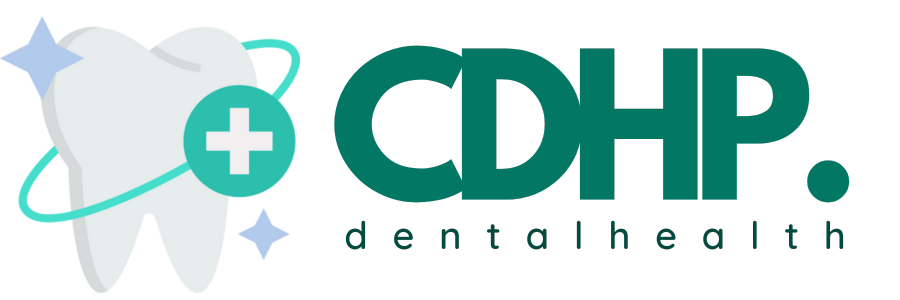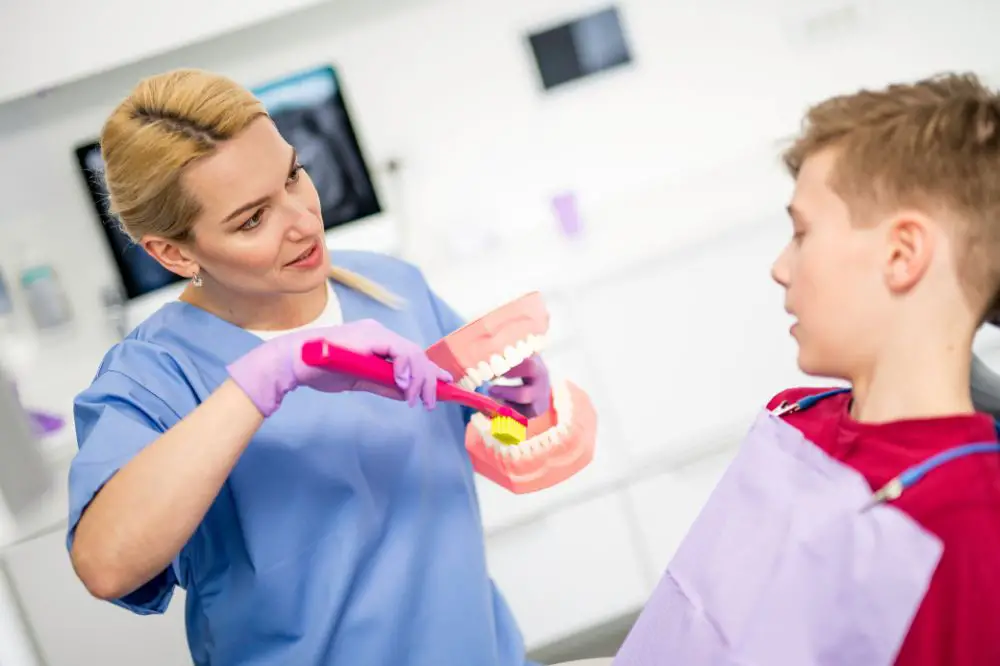If you are considering a career in the medical profession but don’t want to become a doctor or a dentist, choosing the dental hygienist career path could be another option to consider.
The training period is considerably shorter than for doctors or dentists, but they still work with patients every day, helping them maintain good dental hygiene and oral health. And for anyone who wants to know more, here, we answer the question, what does a dental hygienist do?
What’s a dental hygienist’s job description?
According to the US Bureau of Labor Statistics, a dental hygienist’s job description includes the following responsibilities:
- Removing tartar, stains and plaque from teeth
- Applying sealants and fluorides to help protect teeth
- Taking and developing dental X-rays
- Assessing patients’ oral health and reporting findings to dentists
- Documenting patient care and treatment plans
- Educating patients about oral hygiene techniques such as how to brush and floss correctly
Perhaps most people associate dental hygienists with the work they do in cleaning patients’ teeth, but they also have a range of other responsibilities, as this list demonstrates – so now let’s have a look in a bit more depth at some of the things dental hygienists do each day.
If you want an overview of a dental hygienist’s work, you can also check out this video before reading on.
What Does a Dental Hygienist Do?
1. Cleaning teeth and removing stains
As we’ve just mentioned, this is probably the part of a dental hygienist’s job brief that most people associate them with, and it is an important part of their daily work.
Dental hygienists are responsible for cleaning teeth by removing plaque and tartar and also removing stains from things like coffee, wine, curry and tobacco.
They can do this through a range of means and by using various tools, including manual tools for scraping, power tools, ultrasonic tools, lasers and air-polishing devices.
The tools that are available to a dental hygienist will depend to a certain extent on the practice where they work, and the most hi-tech or advanced tools might not always be available in some cases.
Part of a dental hygienist’s training involves learning about the various tools at their disposal and how to use them.
Throughout their career, they also need to ensure they keep up to date with the latest techniques and most advanced equipment to be able to offer patients the highest levels of care.
Cleaning teeth is done to make sure patients’ teeth always look their best, giving them confidence in their smiles – but at the same time, cleaning is also done to improve oral hygiene and to prevent the patient from developing cavities or other issues related to poor oral health.
2. Reviewing patients’ dental history
Before carrying out any cleaning work or other dental procedures, a dental hygienist also needs to review a patient’s dental records as well as any relevant health records.
This will allow the hygienist to understand what dental work or procedures the patient has had done in the past, which may affect any treatments the patient receives in the future.
At the same time, the hygienist will be able to assess changes in the patient’s health, assess any oral health risks and take into account any medication the patient is currently taking.
When taken together, this information will help the hygienist, in conjunction with the dentist, to come up with a personalized dental health plan while avoiding any medical emergencies.
3. Assessing patients
Hygienists are also responsible for assessing patients’ current situation by checking for things like tooth decay and oral disease.
This process is carried out before the dentist begins any other procedures and helps to spot developing problems early while also avoiding complications once any dental procedures begin.
In some practices, hygienists will carry out an oral examination, which can then be compared with previous results to ascertain whether the patient’s oral health is improving, deteriorating or has remained the same.
4. Taking and interpreting X-rays
Hygienists may be responsible for taking X-rays of patients’ teeth, and they are also responsible for interpreting the X-rays to spot any issues that need to be addressed.
Again, this allows them to notice problems like cavities, gum disease or oral infections early – and if conditions are found as early as possible, it makes them easier to treat.
5. Giving preventative care
Another of their responsibilities is to provide preventative care, and this often involves providing fluoride treatments to strengthen teeth and fortify them against acid erosion as well as applying sealant to help control or prevent tooth decay in children.
6. Educating patients about dental health issues
A major part of a dental hygienist’s job involves education, and this is something the best hygienists take very seriously.
As well as cleaning patients’ teeth, they also have a role in educating their patients on how to look after their teeth themselves to prevent potential problems from occurring.
This may involve advice about brushing and flossing as well as things like which toothbrushes to use, how diet affects teeth and dental health and many other related issues.
Although most patients know they need to brush their teeth and visit a dentist regularly for check-ups, dental hygienists are there to help them learn more about how to look after their teeth to reduce the issues that can arise from poor dental hygiene and oral health.
7. Keeping records
As well as carrying out treatments such as cleaning or polishing, dental hygienists also need to keep detailed records of everything they do.
This is so that future dentists or hygienists treating a patient’s teeth will be able to get a clear idea of what the patient has already had done in the past, which may affect their future treatments.
8. Communicating with the dentist
Finally, hygienists need to communicate clearly with the dentist to make sure they are working in tandem.
Although the dentist is the senior person, dentists and hygienists work together as a team to ensure their patients receive the best possible care.
To this end, it is essential for the hygienist and the dentist to communicate effectively to make sure they both know exactly what is happening with each of their patients.
What skills does a dental hygienist require?
If you’re interested in becoming a dental hygienist, it’s not enough just to know what they do.
You should also consider whether the job description fits your personality since it takes at least two years and sometimes longer to train as a dental hygienist, so you don’t want to waste your time if you’re not going to enjoy the work or the working environment.
One of the most important aspects of a dental hygienist’s job is working with other people.
They are in constant contact with patients and also need to work with both dentists and dental assistants. This means they need to enjoy being around other people, they need to like helping people and they need to be able to work as part of a team.
Communication skills are extremely important for dental hygienists, and being able to pay good attention to detail is also a vital trait.
Dental assistants also need to be reliable and well-organized, and they need to be able to complete tasks efficiently and in a timely manner. Sometimes, the ability to multitask can also be a big advantage.
FAQs
What’s the difference between a dental hygienist and a dentist?
A dental hygienist’s main role is in cleaning teeth as well as helping patients maintain good dental hygiene and oral health.
However, while a dentist’s job involves checking patients’ teeth and helping prevent future problems, it also involves correcting or resolving problems by treating and restoring teeth and gums once problems arise.
As a result, the scope of a dentist’s job is far wider than that of a dental hygienist.
What’s the difference between a dental hygienist and a dental assistant?
A dental hygienist is primarily responsible for the dental hygiene and oral health of patients and carries out specific tasks to evaluate and promote them in patients through evaluation, cleaning and education.
A dental assistant, on the other hand, is there to help dentists and dental hygienists carry out their work while also taking care of certain administrative jobs.
They may also be required to prepare rooms for dentists and hygienists, and part of their job description also involves making patients feel comfortable and helping them with things like payments.
It takes longer to become qualified as a dental hygienist than it does to become a dental assistant, and as a result, dental hygienists also earn more than dental assistants.
A rewarding and fulfilling career path
For those who enjoy working with people and who like the idea of helping patients while also being an important member of a team, becoming a dental hygienist has many attractions – and it’s also a job with excellent job prospects since dental hygienists are in great demand.
Most people know that dental hygienists are responsible for cleaning patients’ teeth, but there’s also a lot more to the job description than just that – and with the information in our post, you should now have a much clearer idea about exactly what dental hygienists do.

